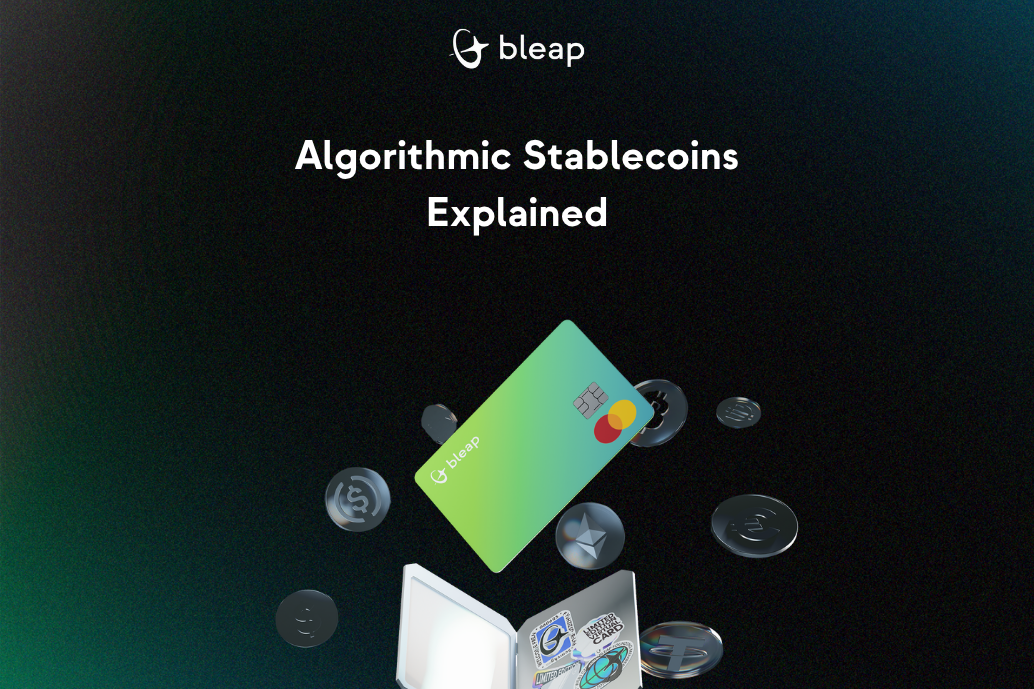
This content is for educational purposes only and should not be considered financial advice. Crypto investments carry risks, including loss of capital. Always do your own research or consult a licensed advisor before investing.
Algorithmic stablecoins are cryptocurrencies that use algorithms instead of collateral to maintain price stability, automatically expanding or contracting token supply to keep their value close to a fixed peg (usually $1).
Algorithmic stablecoins are a class of stablecoins designed to maintain a fixed value typically pegged to the U.S. dollar without being backed by collateral such as fiat or crypto reserves.
Instead, they use smart contracts and mathematical formulas that automatically regulate token supply based on market conditions.
When the price rises above $1, new coins are minted. When it falls below $1, the system burns or removes coins from circulation.
This makes algorithmic stablecoins a type of self-regulating, decentralized monetary system similar to an automated central bank operating entirely on-chain.
Algorithmic stablecoins maintain stability through three main models that manage supply and demand differently.
In a rebase model, the supply of tokens in every wallet automatically expands or contracts daily depending on price deviation from the peg.
In seigniorage-based systems, two or more tokens interact:
This model mimics how a central bank issues and buys back currency but algorithmically.
This hybrid approach uses partial collateralization plus algorithmic adjustments.
The goal is simple: keep the price near $1 using autonomous incentives.
However, this system works only if users believe it will.
When confidence falls, nobody buys the discounted tokens, triggering a feedback loop of collapse.
Algorithmic stablecoins push decentralization to the limit, but they sacrifice reliability and investor protection to do so.
Algorithmic stablecoins are among the most innovative yet fragile structures in DeFi.
Smart contract vulnerabilities or oracle failures can disrupt peg mechanisms.
Their stability relies on market confidence. If users stop believing the peg will hold, demand vanishes, and a death spiral begins.
Reflexive feedback loops amplify panic: when the price drops, people rush to sell, worsening the situation.
After the Terra Luna collapse, regulators (e.g., the EU under MiCA) scrutinize algorithmic stablecoins as potential systemic threats. Many may require full collateralization or registration to operate in Europe.
Key Concern: Algorithmic stablecoins can collapse overnight if trust or liquidity disappears, unlike fiat-backed coins, which can be redeemed directly.
In May 2022, TerraUSD (UST), once valued over $18 billion, collapsed alongside its sister token LUNA, wiping out over $40 billion in market value.
UST stayed pegged by allowing users to exchange $1 worth of LUNA for 1 UST and vice versa.
When UST lost its peg, users minted excessive LUNA to restore parity, but this hyperinflated LUNA instead, destroying both tokens’ value.
Algorithmic stablecoins are now evolving into semi-collateralized systems that trade pure decentralization for practical resilience.
Source: CoinMarketCap, October 2025
If you choose to hold algorithmic stablecoins, non-custodial storage is essential.
Custodial platforms can freeze assets or fail during market shocks.
With Bleap’s MPC non-custodial wallet, you can:
👉 Explore Bleap’s non-custodial wallet →
The future may belong to hybrid designs, part algorithmic, part collateralized.
As DeFi matures, innovation is moving toward sustainability over ideology.
Expect:
Algorithmic stablecoins may never fully replace fiat-backed models, but they continue to inspire progress toward decentralized money.
They are cryptocurrencies that maintain a stable price using algorithms and smart contracts instead of fiat or crypto collateral.
By automatically increasing or decreasing supply based on price deviations from the target value (usually $1).
They are high-risk experimental assets. When market confidence drops, they can de-peg or collapse entirely.
Ampleforth (AMPL), Frax (FRAX), USDD, and the collapsed TerraUSD (UST).
Fiat-backed stablecoins hold real reserves like USD in banks. Algorithmic stablecoins rely solely on on-chain rules and user incentives.
Their stability depends entirely on market trust and liquidity. If confidence fails, the system can spiral into collapse.
Algorithmic stablecoins represent one of DeFi’s boldest experiments: programmable, decentralized money without collateral.
Their failures, especially Terra Luna, revealed serious flaws but also drove innovation toward more resilient hybrid designs.
For users exploring stablecoin options, security and self-custody are paramount.
With Bleap’s on-chain account, you can hold, spend, and earn with stablecoins safely, all under your control.
👉 Protect your stablecoins with Bleap today → Get started securely
Features
Improvements
Bug fixes